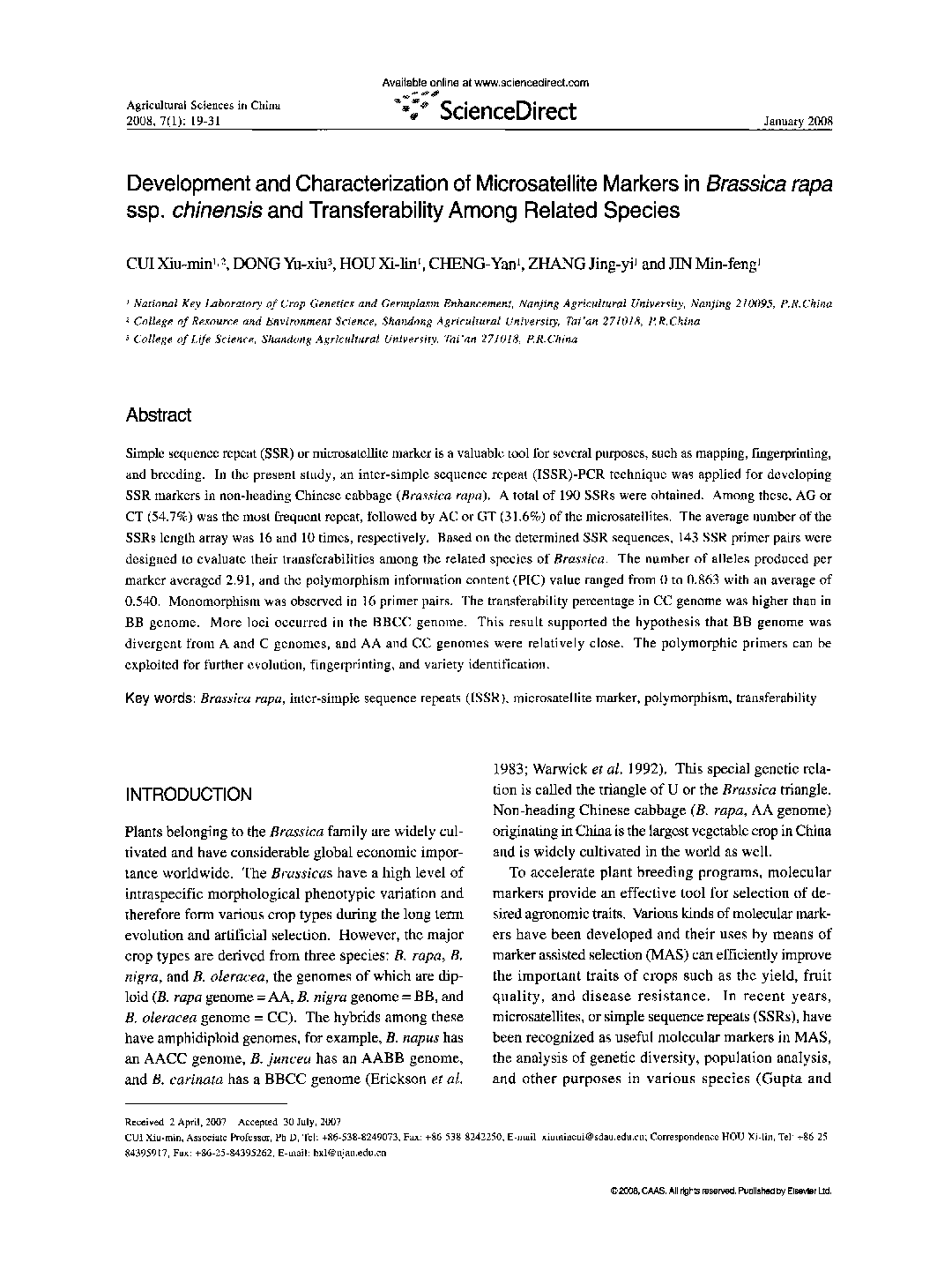| Article ID | Journal | Published Year | Pages | File Type |
|---|---|---|---|---|
| 4490720 | Agricultural Sciences in China | 2008 | 13 Pages |
Simple sequence repeat (SSR) or microsatellite marker is a valuable tool for several purposes, such as mapping, fingerprinting, and breeding. In the present study, an inter-simple sequence repeat (ISSR)-PCR technique was applied for developing SSR markers in non-heading Chinese cabbage (Brassica rapa). A total of 190 SSRs were obtained. Among these, AG or CT (54.7%) was the most frequent repeat, followed by AC or GT (31.6%) of the microsatellites. The average number of the SSRs length array was 16 and 10 times, respectively. Based on the determined SSR sequences, 143 SSR primer pairs were designed to evaluate their transferabilities among the related species of Brassica. The number of alleles produced per marker averaged 2.91, and the polymorphism information content (PIC) value ranged from 0 to 0.863 with an average of 0.540. Monomorphism was observed in 16 primer pairs. The transferability percentage in CC genome was higher than in BB genome. More loci occurred in the BBCC genome. This result supported the hypothesis that BB genome was divergent from A and C genomes, and AA and CC genomes were relatively close. The polymorphic primers can be exploited for further evolution, fingerprinting, and variety identification.
